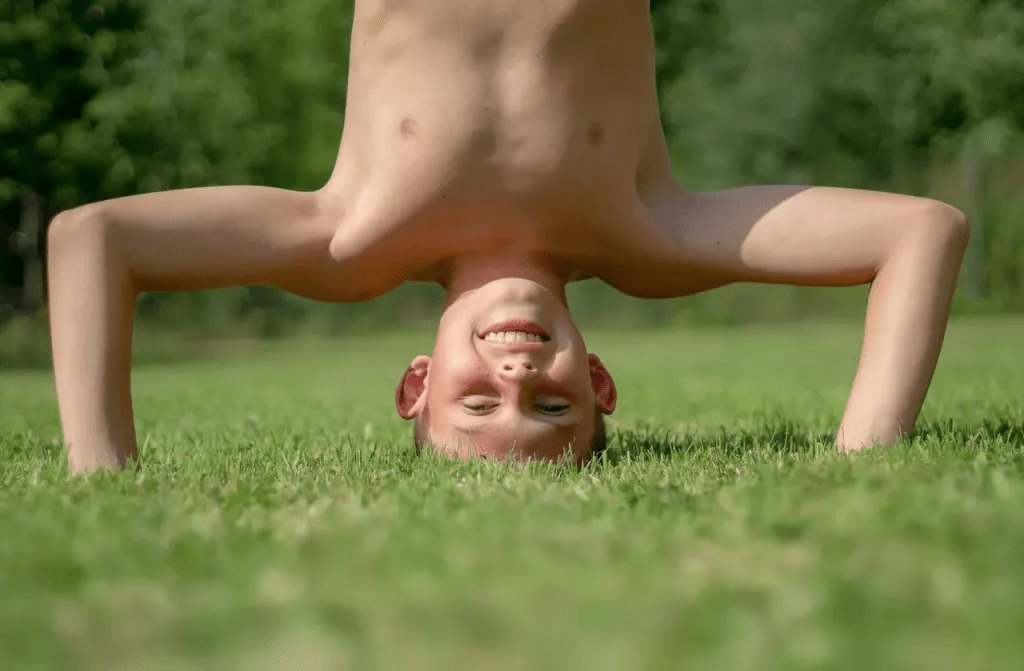There’s a fine line between play and exercise for most children – they’re often one and the same. But children with autism may face roadblocks expending their energy through play-related exercise. Neurotypical children usually transition from solo play to social play as they develop, engaging with their peers and learning valuable social skills through play-related exercise. Children with autism often struggle to connect with their neurotypical peers and may find social play stressful.
This can create a situation where children with autism have fewer outlets for energy release, adding stress for the child and their parents, teachers, and clinicians. That’s where robot-assisted instruction for children with autism comes in!
When It Comes to Exercise, Robots and Autism Go Hand in Hand
Robots can reduce some of the pressure associated with social play for children with autism. In an exercise session with a robot, the child plays and performs exercises with the robot over an extended period.
There’s usually a social aspect to this play. A therapist or other adult is often present to engage in exercises and games along with the child. Exercises and games can even be used in a small group school setting with peers. The child is still being monitored to make sure the activities are productive, healthy, and safe. But the robot is there to serve as a buffer for the child as he or she engages in exercise and play.
The Benefits of Robot-Assisted Exercise
An Approachable Outlet
Kids are bursting with energy. Even with neurotypical children who play with their peers all day long, many parents can’t keep up. For children with autism who shy away from social play with their peers, this can create a complicated situation. The child may have pent-up energy and the parents feel a heavy burden to make sure all their child’s exercise and play needs are met – all without overwhelming their child.
But children with autism still need an outlet for their imaginations, energy, and growing minds. Using a robot takes some of the burdens away from the adults in the child’s life, serving a peer-like role to encourage exercise and play. Children with autism may feel more comfortable exercising and playing with a robot since the robot’s algorithm is more predictable and less erratic than the behavior of other children.
Robot-guided physical exercises let kids move their bodies in ways that may be difficult for them to do when other children are around – allowing children with autism to work on improving motor skills. Physical learning with robot-assisted instruction can reduce anxiety, which is often a significant barrier for children receiving physical therapy treatment, especially for those with autism.
Developing Social Skills in a Controlled Environment
Exercise and play are both crucial ways for children to develop social skills. Having the robot nearby can help break the ice of a social play session. Robots are a less intimidating, easier companion for many kids with autism. The robot can help children feel comfortable enough to let loose and enjoy the moment. They can help children by providing positive outlets for their energy without creating stress and without being psychologically taxing. Robots have been used to help children with autism learn how to share, take turns, and build other crucial skills.
What Emerging Research Has to Say
Autism Awareness is more prominent than it has ever been and, as a result, more and more children are being diagnosed with autism at earlier ages. There is a greater need for resources and innovative ways to meet children’s needs. Since robot-assisted instruction has shown such promising results in the past few decades, research and interest in robot-assisted instruction are surging with the increase in autism diagnoses.
A recent study published in the National Library of Medicine’s National Center for Biotechnology Information found that robots used for Robot-Assisted Autism Therapy (RAAT) can encourage kids to communicate and do exercises. The robots play games with children, helping them develop joint attention skills, motor skills, and spatial reasoning and encouraging eye contact in robot-facilitated conversations.
Over time, children engage in conversation with the robots much like they would with their peers. This creates a safe environment for children to engage in energetic play and social interaction without the added stress of complicated communication. Researchers are still discovering whether these skills transfer to other environments (social play with peers and other interactions with people) but it looks promising!
MOVIA’s Approach
MOVIA believes in working with, rather than against, the natural strengths and inclinations of children with autism. Rather than forcing children into social play and exercise situations that simply don’t suit them, MOVIA creates robot instruction that meets children where they are.
Conclusion
Every child deserves an opportunity to explore their world through exercise and stimulating play. Just because children with autism may struggle to let out their energy and develop critical skills through traditional social play doesn’t mean they don’t need exercise just as much as neurotypical children.
Exercise is a vital part of healthy development for every child. Using robots that children find comfortable and easy to engage with, parents, teachers, and clinicians can foster environments for physical growth and social development.
To learn more about MOVIA’s unique approach to supporting children with autism, visit our website or contact us at info@moviarobotics.com. We would love to discuss how we can help teachers, parents, and clinicians who work with children with autism.

